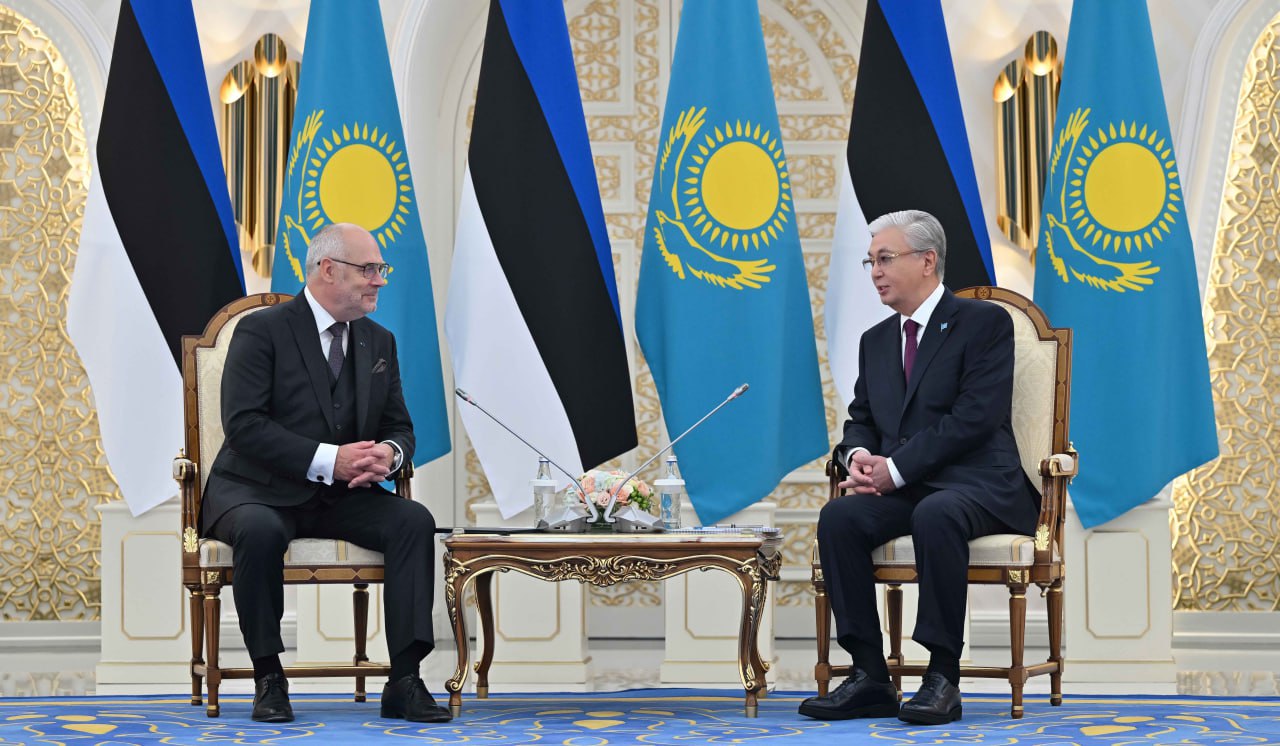ASTANA, Kazakhstan, November 20. The state visit of Estonian President Alar Karis to Kazakhstan from November 17 to 19, 2025, represented a pivotal step in advancing transport and logistics cooperation between the two nations. During discussions with President Kassym-Jomart Tokayev, Karis underscored Estonia’s potential role as a strategic partner, while Tokayev highlighted Kazakhstan’s interest in securing access to Estonian seaports. For Astana, Tallinn offers an attractive combination of political stability, advanced port infrastructure, modern technologies, and seamless integration into the European Union’s logistics framework.
According to data from the Bureau of National Statistics, Kazakhstan transported approximately 955 million tons of cargo from January to October 2025, reflecting an 8.1 percent increase compared to the same period in the previous year. This surge in freight traffic underscores the growing importance of the Trans-Caspian International Transport Route (TITR), which serves as a cornerstone for the emerging Eurasian transport network.
In this context, Estonia could potentially gain access to the TITR via Latvian infrastructure. Previously, Latvia’s Ambassador to Azerbaijan, Edgars Skuja, indicated that linking Latvian ports to the Middle Corridor could facilitate the extension of the route toward Northeastern Europe and the Baltic Sea, further enhancing regional connectivity.
In 2024, Kazakhstan's Ministry of Transport reported that Latvia, Austria, Germany, Lithuania, Estonia, and Hungary expressed interest in joining the TITR. That same year, Kazakhstan and Latvia signed a roadmap to eliminate "bottlenecks" and develop the Middle Corridor by 2027.
Furthermore, Estonia is involved in the Rail Baltica railway project, which will connect the Baltic States to the European railway network with the European standard gauge (1435 mm). In the future, this could provide Kazakhstan with a more direct and efficient route to European markets via Estonia.
Specifically, on July 31, 2025, Rail Baltic Estonia and Estonian company AS TREF Nord signed a contract to construct one of Estonia's most complex infrastructure projects – the Soodevahe transport junction. This will feature a multi-level intersection where European standard gauge railways meet the "Russian" broad gauge (1520 mm). This junction will serve as a key link between Rail Baltica and the deep-water Muuga Port, an important logistics hub connecting Estonia to the eastern Baltic Sea and Western Europe's transport network.
This development could be crucial for Kazakhstan, as the expansion of the transport route via Estonian ports opens up new opportunities for exporting Kazakh grain and oilseeds to Europe and Africa. On November 18, 2025, during the Kazakhstan-Estonia Business Forum, Kazakhstan’s national grain operator, Prodkorporatsiya, and the Port of Tallinn signed a memorandum of cooperation, which also includes the use of Muuga Port infrastructure.
The parties agreed to jointly coordinate rail transportation to the Narva-Ivangorod (Russia) border crossing and establish a competitive supply chain with fixed tariffs for terminal and port services.
A key advantage for Kazakhstan lies in Estonia’s advanced digital infrastructure. The implementation of modern IT platforms, e-Customs systems, and integrated digital solutions significantly streamlines cargo processing and reduces administrative burdens, aligning seamlessly with Kazakhstan’s strategy to establish digital corridors and enhance electronic document flows in cooperation with international partners.
Estonia’s political stability as a member of both the European Union and NATO mitigates risks associated with delays, sanctions, or potential transit disruptions, thereby providing more predictable conditions for the transit of Kazakh goods into European markets. Moreover, Estonia’s active role in the EU’s Global Gateway initiative, which seeks to develop secure, resilient, and sustainable transport routes connecting Europe and Asia, further underscores its strategic importance.
By gaining access to Estonian ports, Kazakhstan secures a technologically advanced, sustainable, and geopolitically resilient gateway to Europe. This arrangement offers mutual benefits: Estonia enjoys a stable and increasing flow of freight, while Kazakhstan enhances its export competitiveness, reduces logistics costs, and diversifies its supply chain geography.







